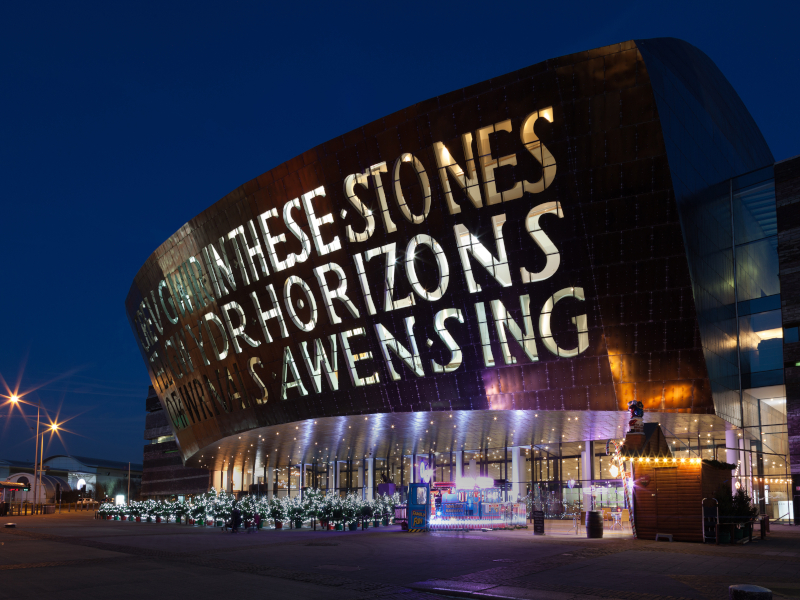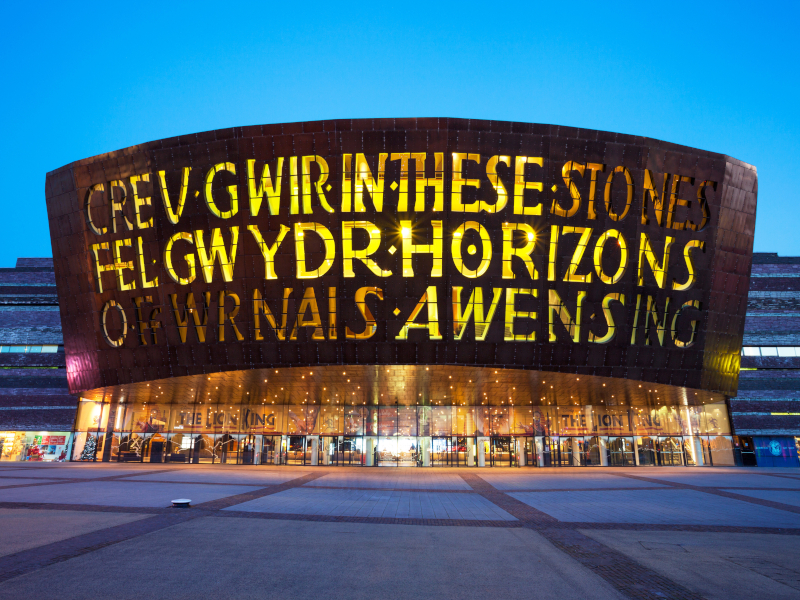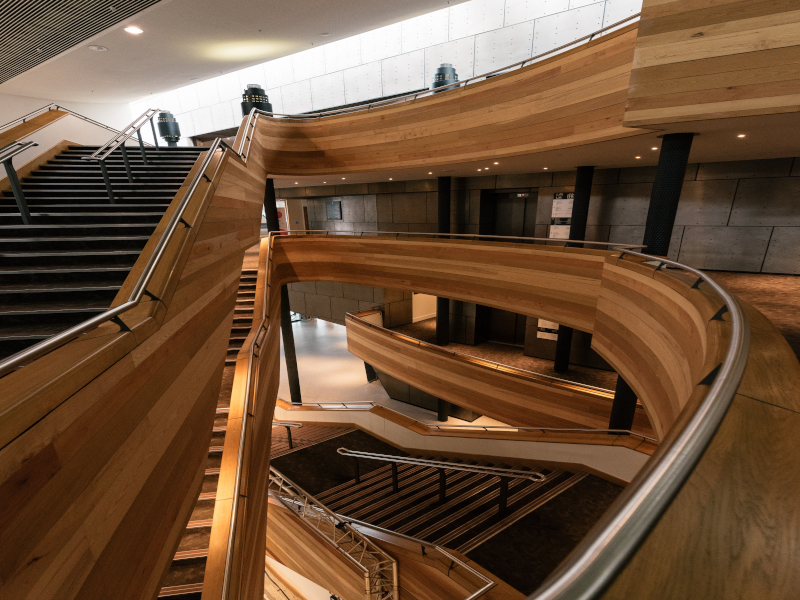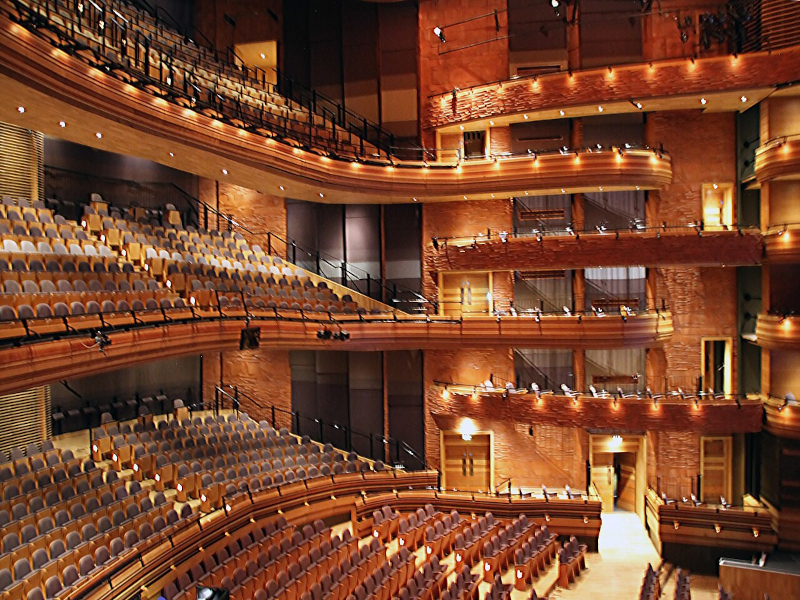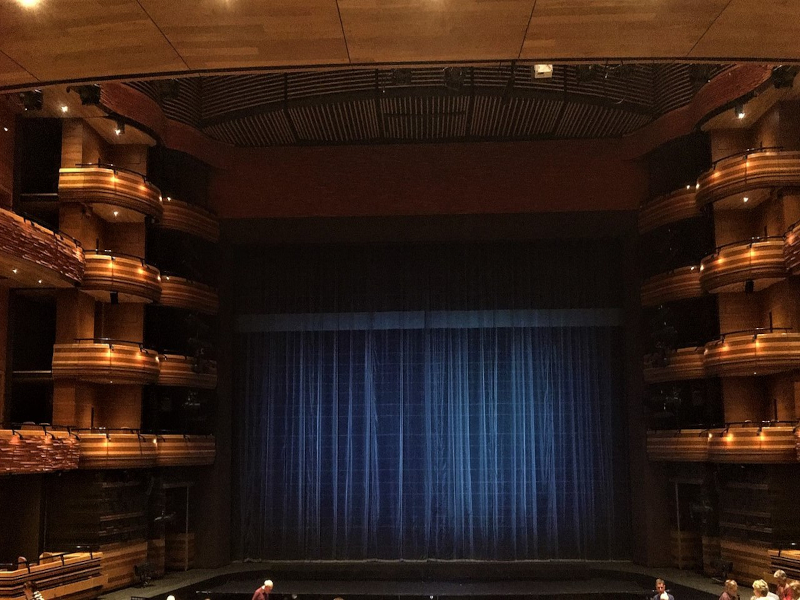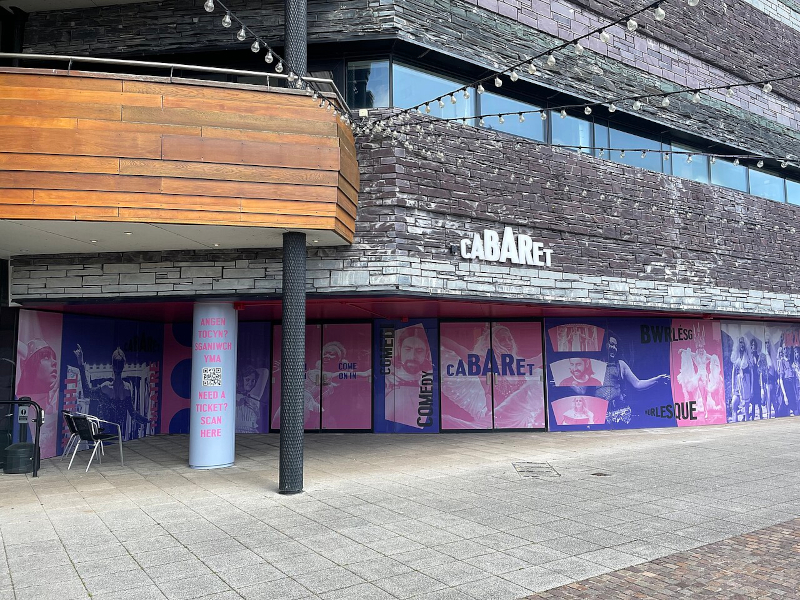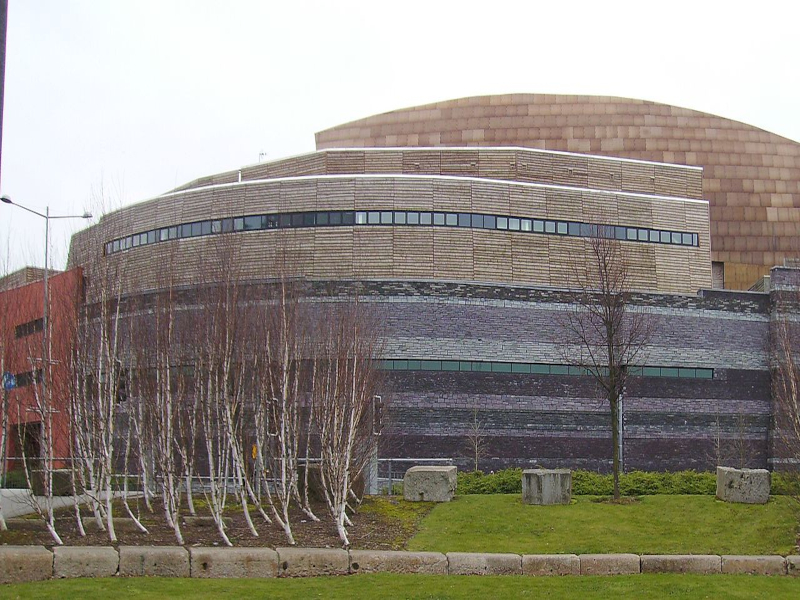The Wales Millennium Centre (WMC) – Canolfan Mileniwm Cymru in Welsh – is a performing arts centre located on Cardiff Bay, Cardiff, Wales.
The construction of the WMC began in a phased manner in February 2002. Phase one of the project was completed in November 2004 while phase two was completed in January 2009.
The WMC has hosted diverse performances ranging from opera, ballet, contemporary dance, drama, comedy and musicals.
A major renovation programme at WMC began in September 2022, with an investment of £4m ($4.3m). It was completed in 2023.
WMC concept
The architecture of the building draws inspiration from both the natural beauty and industrial heritage of Wales. Elements such as the sea cliffs and steel industry of South Wales, as well as the slate mines of the north, influenced its design. This also touches upon the maritime history of Tiger Bay, with its hull-shaped, copper-coloured roof, which has earned the building the local nickname “the armadillo.”
The WMC was also inspired by the solid, stratified landforms of Wales rather than the glass curtain style of British architecture, considering the harsh weather conditions experienced along the South Wales coast. The option was chosen due to its proximity to the sea.
The front of the building features a notable bilingual inscription, “In these stones, horizons sing,” composed by Gwyneth Lewis, former National Poet of Wales. The inscription is adorned with large Celtic lettering crafted from glass.
WMC building exterior
The WMC is situated on a five-acre (two hectares) site in the centre of Cardiff Bay. The exterior of the WMC features walls constructed from waste slate sourced from quarries across Wales, showcasing different stone layers found in sea cliffs.
A total of 4,500t of structural steel was covered with 2,000t of recycled Welsh slate. The slate used includes natural pillared and sawn faces, separated by glass panels to allow natural light into the building.
The WMC was the sole building on Cardiff Bay to integrate slate into its design until the opening of the new Welsh Assembly building. The main auditorium roof above the slate walls is crafted from textured stainless steel in a champagne hue, chosen over copper and aluminium to avoid colour changes due to weathering.
WMC interior
The main entrance to the WMC is directly beneath the inscription. The foyer contains a 30m reception counter.
The west and south main entrances lead into the concourse (ground floor – level zero) and ticket counter, which provides access to the foyers and bars, the auditorium and function rooms, the gallery, the Ty Cerdd and Touch Trust spaces, as well as the retail units and restaurants that surround it.
There are nine function rooms located on levels two and three, for corporate hospitality, seminars and meetings. The major space within the WMC is back-of-house with access denied to the public.
The auditorium can be accessed at five main levels from the foyer, connected by wide, suspended flights of stairs that join with oriel balconies faced with bands of variegated hardwood lining the outer walls.
The WMC is one of the first “new generation” theatres that have their long longitudinal walls articulated with audience boxes, providing a sense of proximity between performers and audience.
Hardwoods from sustainable Welsh woodlands were used throughout the interior, while the tall, black pillars with fern-like fossil patterns represent the enchanting edges of a forest where magic meets reality.
WMC acoustics
Arup Acoustics, tasked with creating acoustic excellence for the WMC, adopted a flexible solution that catered to a range of performing genres.
This was achieved through moveable surfaces that can be sound-reflecting, sound-absorbing or acoustically transparent, to enable the desired orchestral balance and playing conditions.
The auditorium is also acoustically protected on all sides, preventing the transmission of noise from within the venue, as well as disturbance from air and ground-borne noise.
WMC construction details
Phase one of WMC development involved the construction of a 1,900-seat main theatre called the Donald Gordon Theatre, the 250-seat Western Studio Theatre, six function rooms, a hostel, a performance and teaching space, restaurants and coffee shops.
The construction began in February 2002 and the building was officially inaugurated in November 2004.
Phase two was opened in January 2009, and included the 350-seat BBC Hoddinott Hall, the interior of which resembles a Welsh chapel while its exterior continues the theme of phase one.
Opened in 2022, Bocs is an exclusive extended reality (XR) venue tailored for 360° films and projections, as well as XR experiences such as augmented reality, mixed reality and virtual reality. The space accommodates small groups, is wheelchair accessible and is conveniently located on the ground floor.
The WMC also incorporates residential accommodation for 150 members of the Urdd Gobaith Cymru, one of Europe’s leading youth organisations, as well as six leading Welsh cultural organisations: Academi, the Diversions Dance Company of Wales, the Hijinx Theatre Company, the T-Cerdd Music Centre, the Touch Trust and the Welsh National Opera.
WMC refurbishment details
The first phase of the WMC renovation included a new welcome space, a ticketing office, a 12m-long bar, and bespoke seating areas. Other spaces added were a café, a breakout, co-working zones and a 140-seat area named Cabaret at the rear of the building, which opened in February 2023.
The member’s lounge has been revamped to provide a sophisticated environment for loyal supporters and features a bar, changing exhibits and a space for work and relaxation.
The VIP lounge for Ffrind+, Partner, Partner Awen and corporate members was also remodelled with contemporary furniture, a fully equipped bar and a luxurious new restroom.
The building management system (BMS) was upgraded to cover eight main motor control centre panels and more than 40 BMS enclosures, meeting the heating, ventilation and cooling requirements of the centre. The latest Siemens PXC range and Fine Dust sensors were installed in the main auditorium for monitoring particle pollution.
Desigo CC’s open and modular solution ensures increased productivity, health and happiness for all users.
WMC funding
The overall investment in the centre was £106m ($200m). The National Lottery Millennium Fund contributed £31.7m ($60m) to the project and another £37m ($70m) was funded by the National Assembly of Wales.
A further £10.4m ($19.6m) was donated by the Arts Council of Wales (a lottery-funded organisation). A private investor, London-based South African businessman Donald Gordon, boosted the funds by donating £20m ($37.8m) to be shared equally between the Royal Opera House in London and the WMC.
A major sponsorship agreement between the WMC and the Principality Building Society provided the remaining funds for the project.
Project contractors
The phase one development of WMC was designed by architect Jonathan Adams of Capita Architecture (formerly CapitaPercy Thomas). Architects Tim Green and Keith Vince of Capita Architecture designed phase two.
Sir Robert McAlpine was the main contractor, with Arup as the structural and service engineer.
Carr and Angier served as the theatre consultant, and Arup Acoustics was the acoustician. Bucknall and Austin were project cost managers. GH James Cyf constructed the walls using stone.
Other contractors included Stent (deep piled foundations), the Swansea Institute (architectural glass), Rimex (textured stainless steel), Alfred McAlpine (slate), Coed Cymru (wood), Ann Catrin Evans (bronze door handles and door push plates), and Amber Hiscott (etchings on glass walls).
TC Consult was selected in May 2022 to assist with contract strategy, procurement and contract administration services for the phase one refurbishment of WMC to comply with construction design and management (CDM) regulations.
Powell undertook the refurbishment and fit-out, with MEA as the quantity surveyor and Viewport Studio as the architect for the renovation project. LEARND, a BMS and energy management company, carried out the BMS system upgrade.
Other contractors involved in the renovation project included DHA Designs, Whitehead Building Services and LEDFlex.

